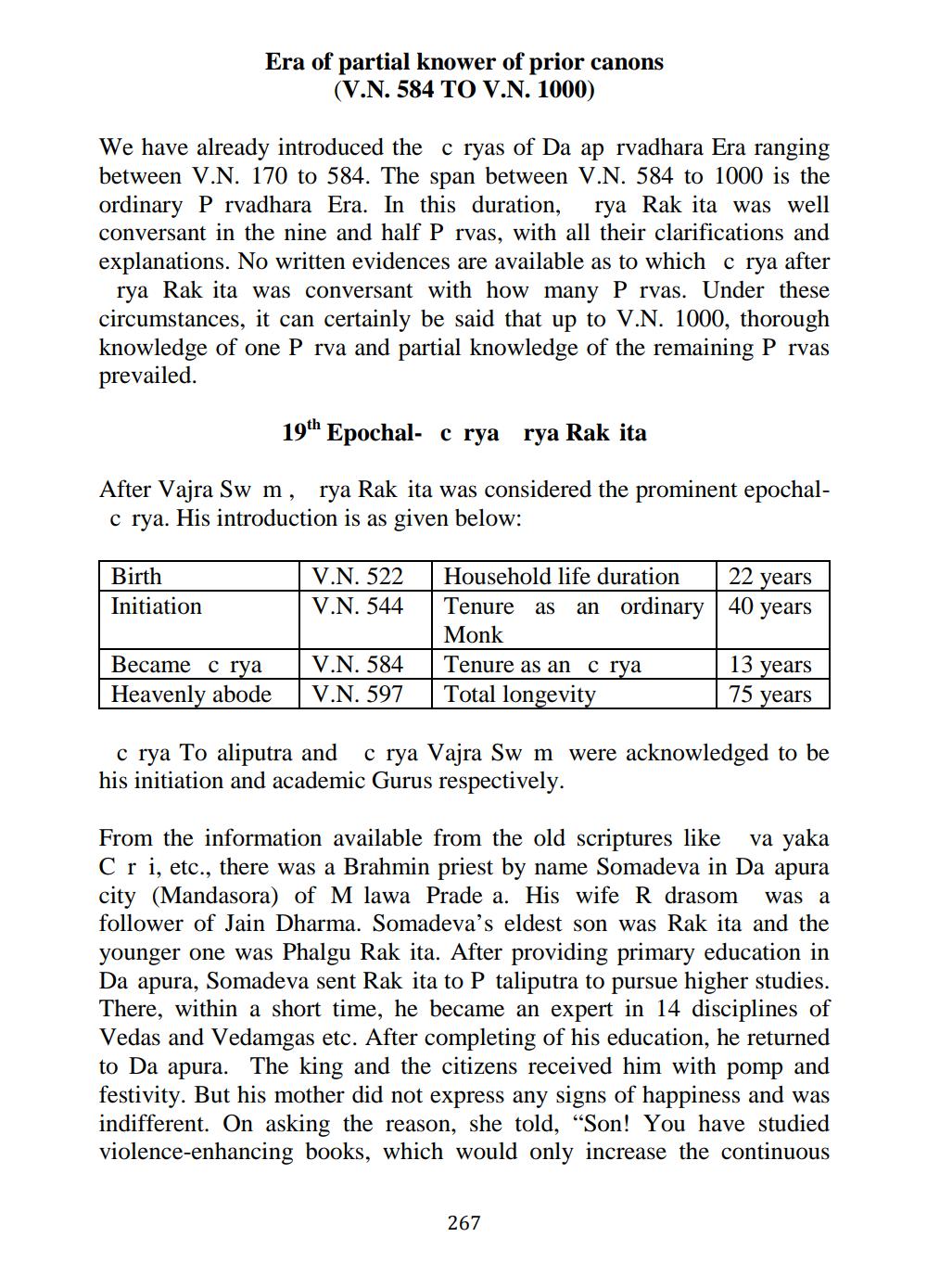________________
Era of partial knower of prior canons (V.N. 584 TO V.N. 1000)
We have already introduced the c ryas of Da ap rvadhara Era ranging between V.N. 170 to 584. The span between V.N. 584 to 1000 is the ordinary P rvadhara Era. In this duration, rya Rak ita was well conversant in the nine and half P rvas, with all their clarifications and explanations. No written evidences are available as to which c rya after
rya Rak ita was conversant with how many P rvas. Under these circumstances, it can certainly be said that up to V.N. 1000, thorough knowledge of one P rva and partial knowledge of the remaining P rvas prevailed.
19th Epochal- c rya rya Rak ita
After Vajra Sw m, rya Rak ita was considered the prominent epochalc rya. His introduction is as given below:
Birth Initiation
Became crya Heavenly abode
V.N. 522
V.N. 544
V.N. 584
V.N. 597
Household life duration Tenure as an ordinary
Monk
Tenure as an c rya Total longevity
22 years 40 years
13 years
75 years
c rya To aliputra and c rya Vajra Sw m were acknowledged to be his initiation and academic Gurus respectively.
267
From the information available from the old scriptures like va yaka Cri, etc., there was a Brahmin priest by name Somadeva in Da apura city (Mandasora) of M lawa Prade a. His wife R drasom was a follower of Jain Dharma. Somadeva's eldest son was Rak ita and the younger one was Phalgu Rak ita. After providing primary education in Da apura, Somadeva sent Rak ita to P taliputra to pursue higher studies. There, within a short time, he became an expert in 14 disciplines of Vedas and Vedamgas etc. After completing of his education, he returned to Da apura. The king and the citizens received him with pomp and festivity. But his mother did not express any signs of happiness and was indifferent. On asking the reason, she told, "Son! You have studied violence-enhancing books, which would only increase the continuous




